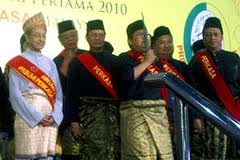The blade was designed simply to cut as it evolved from the caveman’s rock flint into metal it spawned various forms. From Europe’s kingdoms of heavy swords to China’s fast, light waited spears to Japan’s sharp elite katana, the blade is constantly changing its shape but never its form.
The martial arts systems of today are generally practiced unarmed but almost all fighting styles used a weapon originally before adapting an open hand approach.
The blade is an extension of the hand aiding the practitioner’s skills in combat, the fight is determined on distance, be it arms length or up close the blade is the foremost efficient weapon in fatal combat.
The Roman short sword known as ‘the sword that conquered the world’ is said to be the most effective sword in battle, due to its size and adaptable use, this blade works on the inside as well as capable of killing at a distance.
It is the compact size and sharpness of the common knife blade which makes it so devastating in its application. A full length sword is only as effective as its handler, its weakness lies beyond its hilt, once the opponent has managed to get passed the blades length the sword is obsolete.
Its handler is disabled by holding onto the weapon whilst their opponent is free with a knife blade to stab and cut with full dexterity and utilizing their other combative tools such as legs, arms, knees, head, elbows and body manoeuvres without being hindered by a long blade in their hand.
Despite the flamboyant blade display’s shown by various martial art systems today, in truth a practitioner needs only to place the blade in the way of oncoming attacks to cause damage.
The most important use of the blade is placement and the awareness of your own weapon, to know where it is directed and where your body will be in relation to it, only then will your hand and knife act as one.
The blade of Indonesia known as the keris was said to have been constructed by enlighten priests, these empu (blade smiths) not only crafted the weapon but they also performed rituals upon it, making it a spiritual matter, the term keris comes from the Malay meaning dagger.
Pendekar Scott McQuaid with a Keris
Sculptures of the keris that date back more than 400 years have been found in central Java’s Chandi Borobudur where it is known as kujang. The Javanese refer to this keris as tosan Aji (magic metal) the most famous recognizable design is the wavy blade Sarpa Lumuka (snake in motion).
Sculptures of the keris
Indonesia’s fighting system Pencak Silat originated from West Sumatra in the 7th century, the pesilat (silat player) adopted the keris in their silat, warrior tribes such as the Batak and the Minangkabau have shed blood using this pocok (blade) in many land disputes. The application of the blade is in stabbing rather than a cutting motion, warriors soaked warangam (arsenic) onto their blades. When the keris was thrust into their victim it was then snapped at the top of the fragile handle leaving the blade entrapped in the body. The victims die a slow death as their intestines explode within.
The keris is a blade noted for its spiritual powers, the blade was sometimes forged from fallen meteorites, believing the weapon would poses a cosmic universal power. The blade varies in its size, it has played an essential part in Indonesian and Malaysia culture, worn today for many ceremonies including weddings but was also once a weapon for execution. The condemned knelt before the executioner, who placed a wad of cotton on the subjects shoulder area. The keris was then inserted through the material and into the shoulder down through the heart. Upon its withdrawal, the cotton wiped the blade clean. Death was quick... as it should be.
opening ceremony
weddings
The keris continues to be shrouded in mystery with tales of deaths being caused by simply thrusting the knife into a victims footprint, the blade is a symbol of serenity, respect and simplicity. These are the virtues of the mind.
During the writing of this article I suffered a knife injury, this highlighted the reality of using a live blade, although I do not condone the use of sharp weapons to others I still remain true to my teaching... ‘If it’s not real, it will not work’.
Thousands of candles can be lighted from a single one and the life of the candle will not be shortened, knowledge never decreases by being shared.
This article was published in Combat magazine, 2007





I am a beginner in silat. The art of silat is lethal indeed. But remember silat is not for fighting. You train to kill, but you do not kill. In silat you are not allowed to punch or kick your opponent, except in training. Such is the emphasis of patience in silat. Silat teaches you patience. Peace and love for all. Now, going back to the keris, it can only be used only when your life is threatened, basically it can only be used in times of war. However, in peaceful times like this, its use is not needed, but as I said earlier the practice of the keris must be preserved in times of peace should the need arise for war. Some of my friends have said that guns are better, but we must take into consideration the reality of close range fighting in which bladed weapons are needed, as it is practical, and we must also consider the fact that it would be devastating since people do not wear armour in these modern times. Back to the keris, it must be cleaned and maintained in to form, but REMEMBER! DO NOT USE THE KERIS ON ANOTHER PERSON EVEN IF YOU ARE PROVOKED OR EVEN PUNCHED OR KICKED DURING THESE PEACEFUL TIMES EXCEPT ONLY IN WAR! PLEASE PRACTICE PATIENCE! PEACE AND LOVE FOR ALL!
ReplyDelete